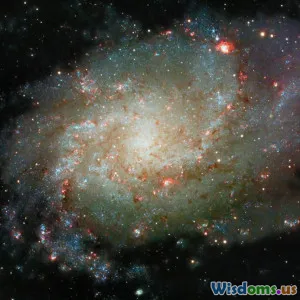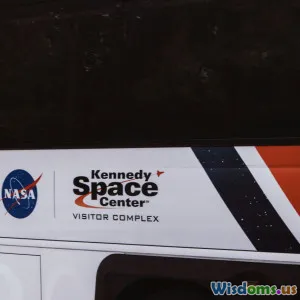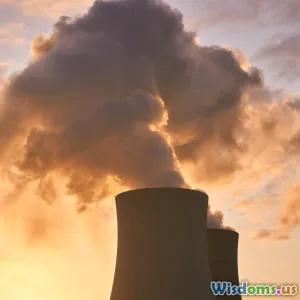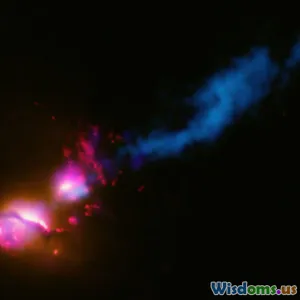
Solar System Formation Could Defy Traditional Nebular Theory
11 min read Explore how emerging research challenges the classical nebular theory of Solar System formation, offering fresh insights into our cosmic origins. (0 Reviews)
Solar System Formation Could Defy Traditional Nebular Theory
The formation of our Solar System has long been attributed to the nebular theory, a cornerstone of astrophysics for over two centuries. According to this classical model, the Solar System formed from a giant molecular cloud undergoing gravitational collapse, which eventually flattened into a spinning protoplanetary disk, leading to star and planet formation. However, recent studies and observations have raised compelling questions about this long-held paradigm, suggesting that the story of our origins might be more complex and fascinating than we previously imagined.
Introduction
The traditional nebular theory, developed in the 18th century and refined continuously ever since, has elegantly explained many key features of the Solar System: the common direction of planetary orbits, their roughly coplanar arrangement, and the chemical differentiation among planets. Yet, new astronomical data and computer simulations are revealing anomalies and complexities that cannot be fully accounted for by the nebular model alone.
From evidence suggesting rapid planet formation to the influence of nearby stellar events, scientists are exploring alternative models that could complement or even overhaul the nebular theory. This article explores these emerging perspectives, the empirical challenges to the traditional model, and what these revelations could mean for our understanding of the Solar System's genesis.
The Classical Nebular Theory: Foundations and Assumptions
Proposed initially by Immanuel Kant and Pierre-Simon Laplace in the late 1700s, the nebular theory posits that the Sun and planets coalesced from a single rotating cloud of gas and dust. This model's core assumptions include:
- Isolated Cloud Collapse: A spherical molecular cloud collapses under gravity.
- Conservation of Angular Momentum: As the cloud contracts, it spins faster, forming a flattened disk.
- Gradual Planet Formation: Dust grains in the disk coagulate into planetesimals, which merge into protoplanets and finally planets over millions of years.
This theory beautifully explained the solar system’s structure, the composition differences between terrestrial and gas giant planets, and relative ages derived from meteoritic evidence. However, its simplifying assumptions, such as uniform disk properties and isolated formation, are increasingly questioned.
Emerging Challenges to the Nebular Paradigm
1. Discrepancies in Isotopic and Chemical Signatures
Meteorites, the ancient building blocks of planets, present isotopic anomalies that challenge a neat uniform solar nebula origin. For example, certain refractory inclusions called CAIs (Calcium-Aluminum-rich Inclusions) have been dated at about 4.568 billion years, with rapid incorporation into planetary bodies that contradicts the gradual accretion story.
Moreover, variations in isotopic compositions of oxygen, nitrogen, and other elements across planetary bodies suggest a heterogeneous environment. This hints that the Solar System's birth environment may have involved external injection of material, such as nearby supernova explosions.
2. Influence of Nearby Stellar Explosions
Recent astrophysical models propose that shock waves from nearby massive stars' supernovae or intense stellar winds could have triggered the collapse of the solar nebula — a process called “triggered star formation.” Some evidence for this includes unusual abundances of short-lived radionuclides (e.g., Aluminum-26) incorporated into Solar System material, which are thought to originate only in massive stellar events.
Dr. Ariel N. Kratzer at the University of Arizona explains, "Our Solar System seems to have been born in a cluster with massive stars, whose explosive deaths supplied both material and energetic shock to jumpstart our primordial cloud. This challenges the picture of an isolated nebula quietly collapsing in vast interstellar space."
3. Rapid Timescales Contradict Gradual Accretion
Contrary to the classic view of planets forming over tens of millions of years, increasingly precise radiometric dating reveals that key planetary bodies may have formed within a few million years—or even faster. This rapid timeline is difficult to reconcile with slow incremental growth in a standard accretion disk model.
Recent magnetohydrodynamic simulations demonstrate that turbulence and magnetic interactions could have accelerated material aggregation substantially, producing planets and planetary embryos in a cosmic blink. This perspective implies the presence of dynamic processes beyond simple gravitational settling.
4. The Role of Disk Instabilities and Gravitational Fragmentation
Instead of gradual dust-coagulation, some theories emphasize the importance of disk instabilities that cause gravitational fragmentation, quickly producing large planet-sized clumps. These gravitational instability models could explain the sudden formation of gas giants like Jupiter and Saturn.
For instance, observations of young, distant planetary systems—such as HL Tauri, with surprisingly well-defined protoplanetary disk gaps seen by ALMA (Atacama Large Millimeter/submillimeter Array) — support scenarios where planets appear far earlier than classical models expect. These gaps may result from early planet formation driven by instabilities rather than slow accretion.
5. The Sun’s Possible Interaction with Surrounding Environment
Another novel idea revolves around the Sun's path through a cluster, interacting with nearby stellar winds and clouds, actively affecting the protoplanetary disk’s chemical and physical properties. Such cross-talk could influence angular momentum distribution, disk temperature, and even the eventual architecture of planets.
This environmental context contrasts with the solitary nebula approach and provides new explanations for the Solar System’s planetary anomalies, such as the high angular momentum of Jupiter and irregularities in planetary orbits.
Alternative or Complementary Models to Nebular Theory
The Triggered Collapse Model
This model postulates that external astrophysical phenomena—like shockwaves from nearby supernovae—initiated the collapse of the protosolar nebula. Unlike spontaneous collapse, triggered collapse can produce conditions favoring rapid and heterogeneous planet formation.
It also accounts for injections of short-lived radioactive isotopes into the cosmic material, helping explain heat sources critical to early planetary differentiation.
The Disk Instability Hypothesis
Instead of dust gradually building planetesimals, massive disk clumps can form planets rapidly via gravitational fragmentation. While traditionally applied mainly to outer gas giants, this model could potentially be extended with modifications to other Solar System components.
Hybrid Theories
Some researchers advocate combining classical accretion with transient gravitational instabilities and triggered events, accepting that real star and planet formation are messier than textbooks suggest. This pluralistic view aligns better with diverse observations of exoplanetary systems exhibiting unexpected structures and compositions.
Implications for Our Understanding of Planetary Systems
If the Solar System’s formation defies the simplicity of the nebular theory, implications are profound:
- Exoplanet Diversity: Explains why extrasolar systems show wildly different architectures from our own.
- Planet Formation Efficiency: Recognizes faster formation, impacting early thermal histories and potential habitability.
- Solar System’s Origin Environment: Insights into the Sun’s likely formation within a stellar cluster, not isolation.
Furthermore, refining our models will aid future missions investigating Solar System bodies and exoplanets, influencing where and how we search for life.
Conclusion
The classic nebular theory has been a guiding light for over 200 years, providing a foundational framework for understanding the Solar System’s origin. Yet, accumulating evidence from meteoritics, astrophysical observations, and cutting-edge simulations points towards a more intricate tale involving triggered collapse, rapid formation processes, and dynamic cosmic neighborhoods.
While the nebular theory is unlikely to be discarded entirely, these challenges encourage us to integrate multiple mechanisms and embrace the complexity of stellar and planetary birth. The Solar System’s formation might be less a quiet coalescence from a homogeneous cloud and more a rich interplay of cosmic forces — an ongoing discovery that continuously reshapes humanity’s place in the cosmos.
References:
- Boss, A. P. "Evolution of the Solar Nebula. IV. Giant Gaseous Protoplanet Formation." Astrophysical Journal (1997).
- Kratzer, A. N. "Triggered Star Formation: A Clustered Beginning for Our Solar System?" University of Arizona, department seminar (2023).
- ALMA Observatory Data on HL Tauri Protoplanetary Disk (2014).
- Dauphas, N., and Chaussidon, M. "A Perspective from Extinct Radionuclides on a Young Stellar Object: The Sun and Its Accretion Disk." Annual Review of Earth and Planetary Sciences (2011).
- Johansen, A. et al. "Rapid planetesimal formation in turbulent circumstellar disks." Nature (2007).
This article invites readers to rethink standard ideas and remain curious about the evolving story of how our Solar System came to be—highlighting ongoing research and discoveries that make astronomy an ever-exciting frontier.
Rate the Post
User Reviews
Other posts in Planetary Science
Popular Posts
















